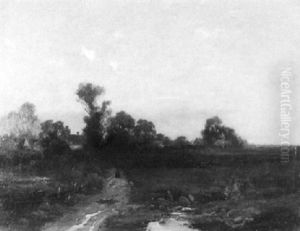Otto Paul Seltzer Paintings
Otto Paul Seltzer was born in 1900 in Germany and embarked on a career that would establish him as a notable figure in the realm of art, particularly in painting and printmaking. His life and career were marked by the turbulent times of the 20th century, including the two World Wars and the significant cultural shifts that occurred during his lifetime. Seltzer's work often reflected the complexities of this era, capturing both the beauty and the strife that characterized his generation.
After receiving his formal education in art, Seltzer developed a distinctive style that showcased his adeptness with both color and form. His early work was influenced by the Expressionist movement, which was prominent in Germany at the time. Expressionism's emphasis on emotional expression and its departure from realism resonated with Seltzer, and his paintings from this period exhibit bold colors and dynamic compositions that seek to evoke a visceral response from the viewer.
As the political and social landscape of Germany changed, particularly with the rise of the Nazi regime, Seltzer, like many artists of his time, faced challenges that affected his career and personal life. The oppressive environment led to restrictions on artistic expression and forced many artists to either conform to the state's aesthetic preferences or face persecution. The impact of these events on Seltzer's work is evident in the evolution of his style and subjects during and after World War II.
Despite the challenges, Seltzer continued to produce work that was both personal and reflective of the broader societal changes. After World War II, his style became more introspective, focusing on themes of survival, loss, and the resilience of the human spirit. His later work often depicted scenes of post-war recovery, with a more subdued palette and a focus on the simplicity of everyday life.
Otto Paul Seltzer passed away in 1970, leaving behind a body of work that not only highlights his technical skill and artistic vision but also serves as a poignant commentary on the era in which he lived. His paintings and prints remain a testament to the power of art to capture the complexities of human experience, making Seltzer a respected and remembered figure in the history of 20th-century art.



